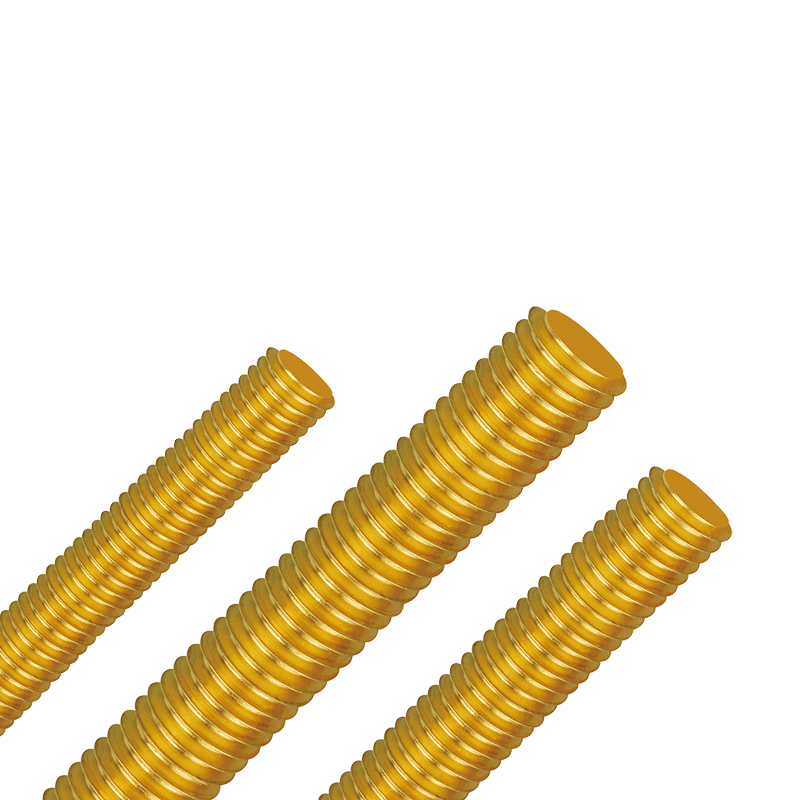A threaded rod is a common form of metal fastener that looks similar to a screw or nail. It has helical threads that extend the length of the rod, which allows it to generate rotational movement when used in place. This allows it to create holding power in materials that could otherwise be difficult to fasten. It's commonly found in professional construction work, maintenance and repair jobs, and industrial applications.
Like many other types of fasteners, threaded rods can be made from several different materials. Stainless steel, for example, offers resistance to corrosion and other harsh environmental conditions. This is especially useful in areas where water or other liquids may be present. It's also available in various finishes and coatings that impact how well the rod holds up over time, as well as its aesthetics.
In addition to standard diameters and grades of threaded rods, it's possible to order custom lengths for specific application requirements. This can include a variety of diameters, thread pitches, and materials. For instance, it's possible to find all-thread rod with left-hand threads, which are particularly well-suited to environments where vibration might occur. It's also possible to get coated all-thread rod, which provides an added level of protection from harsh environments.
Another common option is to order a double-ended threaded rod, which features threading on both ends of the stud. It's often used for fastening materials or stabilizing structures, and it can be paired with standard nuts to provide additional strength to the fastener. These rods are frequently inserted into concrete and wood to help stabilize these structures, and they're also popular with metalworkers for use in furniture construction and other projects.
The threaded rod is available in a range of diameters and can be bent to accommodate various installation needs. The process for bending the rod typically involves heating up the material until it's red-hot. It's then positioned in a vice and slowly shaped into the desired shape. After a few minutes, the rod can be removed from the vice and allowed to cool. Repeat as needed for the desired shape.
Once the threaded rod has been cut to the proper length, it can be installed into a given material in a similar way to how a bolt or screw would be installed. This can be accomplished using a hammer drill or another form of power tool. It's important to follow the instructions for the particular material you're working with, as the steps and methods will vary.
While there are many uses for threaded rods, it's also important to know how to cut the product down to size for a specific installation. In most cases, this is a relatively simple process that can be completed with a few basic tools. To begin, it's important to measure the length of the rod you need and mark the spot where you want to cut it. Once this is done, it's a good idea to clamp the rod in a vise or other form of hold while you saw it down to size with a hacksaw.
